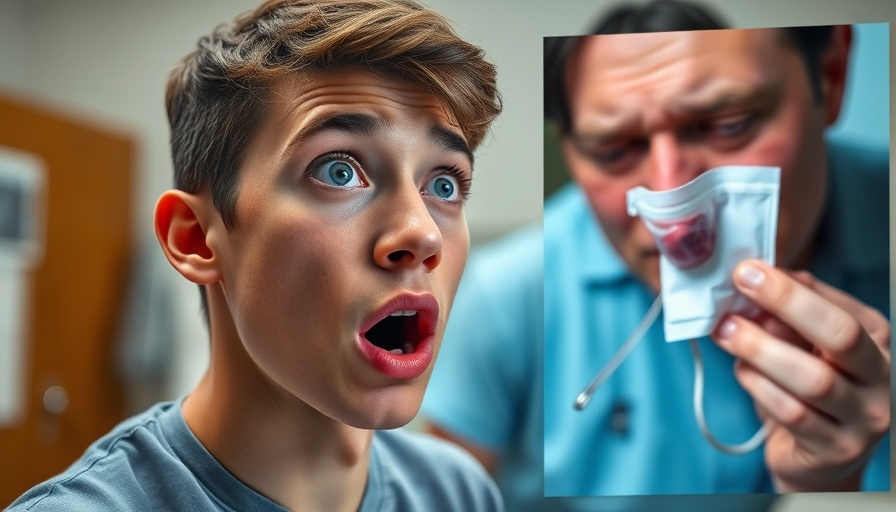
The Wild and Wacky World of ER Visits in Northampton
Emergency rooms (ERs) are often the stage for bizarre yet enlightening medical cases. In a recent video titled Doctor Reacts To Shocking ER Visits, we delve into the astonishing events and medical mishaps that unfold at Northampton General. From dislocated jaws to burns from DIY roofing projects, this captivating glimpse challenges our perceptions of what constitutes a true medical emergency.
In Doctor Reacts To Shocking ER Visits, the discussion dives into the extraordinary cases seen in ERs, exploring key insights that sparked deeper analysis on our end.
Why We Should Care: The Importance of Understanding Emergency Situations
Emergency medical situations can occur anywhere, at any time. Knowing how to react appropriately could be the difference between a minor incident and a life-threatening one. This is important not just for individuals, but for families, communities, and society as a whole. As we learn from the video, mundane activities like yawning during a boring lecture or attempting to construct a homemade playhouse can lead to unforeseen medical crises. Understanding these scenarios equips us with knowledge to react calmly and effectively in emergencies.
Unexpected Causes: Dislocations and Burns
Take the case of Holly Thompson, who attended the ER after yawning too widely, leading to a dislocated jaw. This jaw condition, notably termed "open lock jaw," serves as a reminder that seemingly innocuous actions can lead to severe consequences. It's vital to recognize that stressors, whether from a boring lecture or life’s pressures, can physically manifest in unexpected ways.
Meanwhile, Darren’s DIY mishap showcases the dangers of home improvement projects. After suffering severe burns while using a blowtorch, he was treated by doctors who emphasized the importance of seeking immediate care for serious injuries. Such cases highlight that good intentions can sometimes lead to troubling outcomes, reinforcing the need for safety precautions during home projects.
Lessons from the ER: Practical Insights
So what do we take away from these medical predicaments? Here are several key insights:
Seek Help Quickly: Delays in seeking medical assistance can exacerbate injuries, as seen in Roger's bleeding nose, which prompted urgent care due to possible underlying issues.
Be Cautious with DIY Projects: Always exercise extreme caution while undertaking home projects. Proper safety equipment and awareness can prevent painful accidents.
Know Your Body: Understanding the signs of dislocations or traumatic injuries can help individuals act swiftly, reducing the risk of complications.
Final Thoughts: Stay Informed, Stay Safe
The vibrant commentary found in the video Doctor Reacts To Shocking ER Visits not only captivates viewers but serves to educate on medical emergencies. By unpacking the events witnessed in the ER, we can gain deeper insights into personal health, safety, and the diverse challenges faced in medical settings. Being informed is your first line of defense, whether you are responding to your own emergencies or supporting loved ones in a crisis.
Now that you’ve seen how small incidents can spiral into serious conditions, take a moment to consider how to prepare yourself and your family for emergencies. Take a first-aid course, keep emergency contact numbers handy, and engage in conversations about health. These small actions can make a significant difference and perhaps save a life in the moment of need.
 Add Row
Add Row  Add
Add 




Write A Comment